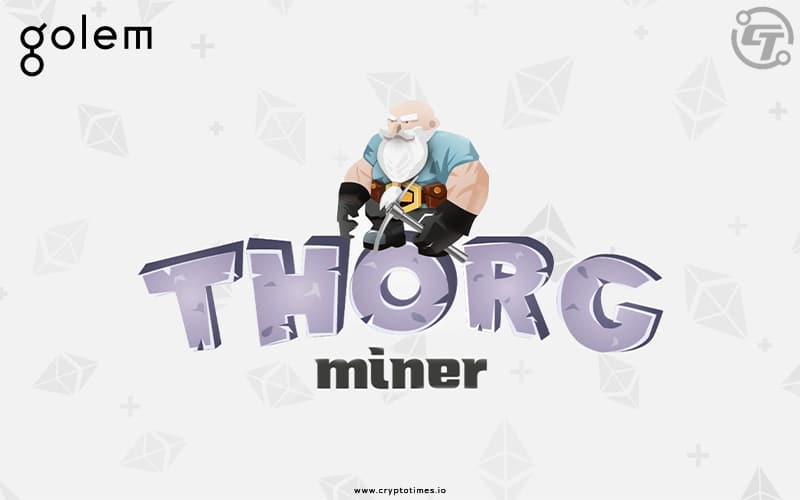In Breif:
- Golem has released an Ethereum mining laptop application called Thorg.
- It runs in the background and uses unused CPU resources.
- The system runs on a Ethereum layer-two aggregator Polygon.
The Golem Network has released a desktop application, Throg, that allows users to mine Ethereum on their laptops. The Thorg application, which allows users to mine Ethereum on Windows-based PCs and laptops, was released by the decentralised computing resources sharing platform.
The application operates in the background and uses additional computing power to perform the calculations required for proof-of-work mining. Instead of receiving Ethereum, users receive Golem’s native GLM money.
The system runs on an Ethereum layer-two aggregator, Polygon, which removes the high transaction costs connected with ERC-20 GLM tokens. It generates “shares,” which are a collection of batch computing activities used to mine Ethereum.
According to Golem CEO Piotr Janiuk, Thorg hopes to increase Golem network adoption by allowing users to earn passive income from their computers.
The application requires a Windows 10 operating system and a graphics card with a memory of 6 GB or more, which is only available on high-end gaming laptops.
Those who believe that mining at home is a simple way to make a fortune should reconsider. According to review websites, a 6GB graphics card will have a hash rate of roughly 26 MH/s. Also, according to mining calculators, income from mining Ethereum on a PC may return roughly $0.06 per day, or take more than a fortnight to generate $1.
“Thorg enhances the Golem platform as this mining use-case opens up new and exciting ways of creating a healthy and efficient market by providing additional tools for optimizing passive income,” said Piotr Janiuk.
Golem is analogous to Filecoin, the decentralized network that allows people to sell and buy computer storage via the FIL token. Only, instead of storage, Golem facilitates the buying and selling of computing power that would otherwise go unused.






